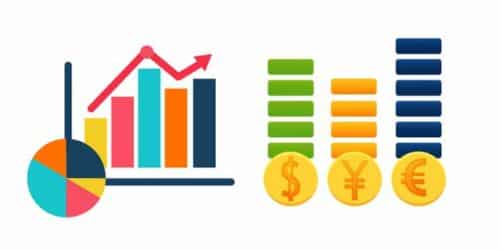Market demand is an important tool for businesses because it quantifies the want for a product at a specific price point. Businesses that take market demand into consideration can store the proper inventory to satisfy customers while maximizing earnings.
This article defines market demand and discusses its benefits, types, and calculation methods. Because the demand curve depicts consumer demands, it is an excellent forecasting tool for estimating demand for other products in the same market.
What is Market Demand?
Market demand outlines the demand for a specific product and who wants to buy it. This is established by how eager people are to spend a certain amount of money on a specific commodity or service. Price rises in tandem with market demand. When demand falls, prices fall as well. Market demand is the sum of what everyone in a certain industry wants and can help merchants construct an e-commerce site.
Market Demand Research Methods
Knowing market demand might help future online businesses decide which industries are the most profitable to enter. As a result, many business owners will be required to do market demand research.
Marketing research entails looking for studies, data, and general knowledge about a particular market or area. It frequently necessitates a variety of methodologies, an organized system of accumulating figures, careful analysis, and meticulous reporting. That does not, however, imply that new businesses require a whole marketing staff to find out about market demand. When conducting research, they have three options:
#1. Surveys:
Social media platforms are ideal for posting surveys regarding products, industries, and services. Find out what your friends and family think about a specific need or idea. Send out a poll by email and urge everyone to forward it to three more people. The broader the scope of a business owner’s market research, the better. Many surveys and case studies are also accessible for download online.
If you rely on business choices on these documents and reports, make careful to check the sources and investigate how the data was obtained. Some surveys are geographically restricted or target a specific demographic, which might distort results.
#2. Experiments:
Experiment design takes time and money, but it may be helpful to an e-commerce store. Offering a new product at a reduced price for a limited period, for example, is a smart method to test it and find out how people appreciate it. This necessitates extensive client involvement as well as a firm commitment to tracking results over time.
#3. Observations:
Simply glancing around – both in the physical and digital worlds – can reveal a wealth of information regarding market demand. Trending themes and items on sites such as Twitter and Pinterest can provide insight into practically any business. This might also include reading local newspapers or magazines in the area where an e-commerce store owner wants his or her merchandise to be seen.
What is the Distinction Between Individual and Market Demand?
Individual demand, as the name implies, pertains to a single person or family, whereas market demand generalizes tendencies for many individuals in a specific segment. A person who is passionate about dogs is more inclined to spend more on a canine product than someone who is only moderately interested. The preferences of one individual may not mirror the tendencies of your entire target market. Aggregate demand is another term for general market demand.
So, why is this significant? It is critical to recognize that while conducting your own market research to predict demand, you must poll a large number of people, not simply those who are most passionate about your sector or product. If you forecast based on individual demand, you may have inaccurate data and expose yourself to huge losses. Market demand is essentially a collection of individual demand data points.
It’s vital to keep an eye on the demand curve throughout the year so that you can change your business plan accordingly. When demand increases, it is often an opportunity to raise a certain price of your items; however, you do not want to raise prices so much that your clients flee to the competition.
What is a Market Demand Curve?
The market demand curve depicts demand based on product pricing. To generate the market demand curve, you essentially map all of the different demand inputs onto a line graph.
The various price points are represented on the y-axis. The number of times the product was purchased at that price point in a specific time period is shown on the x-axis. There will be numerous lines, one for each person, that will normally slope downward. This is because when a product’s price rises, demand shifts, and individuals are more inclined to buy less of it. The supply curve, on the other hand, slopes upward. There will always be ebbs and flows of supply and demand in any really competitive market.
What is the Importance of Market Demand?
When launching a new product or service, organizations must consider market demand since it allows them to meet the needs of their customers. Here are some additional advantages to understanding market demand:
#1. Customer fulfillment:
Calculating market demand can assist a firm in satisfying its consumers since it allows them to provide items or services that the client requires and desires, as well as provide the appropriate volume of their product or service to meet demand.
#2. Business possibility:
Market demand and consumer behavior trends within a market might assist firms predict their customers’ requirements. This entails listening to customers and designing items to meet their needs.
#3. Production and customer relations:
Analyzing market demand assists organizations in strategizing and creating customized products for consumers, as well as designing strategies to communicate with consumers. How a company addresses its target audience is determined by calculating and comprehending market demand.
#4. Methods that are inexpensive:
Businesses can estimate how much of a product or service to make accessible to consumers by evaluating market demand. This prevents overproduction, which can be costly to a company, and assures that the company can sell and profit from its product or service.
Types of Market Demand
Professionals divide market demand into seven categories when performing market research. Understanding these types can help you better plan for a product or service launch. Here are some definitions and examples of these market demands:
#1. Negative Demand
Negative demand is defined by economists as an incident in which a product does not perform as expected by the firm and instead is not a product or service that customers require or can afford. When this happens, it may be able to broaden the reach of the company’s marketing plan so that more people can learn about the product. Businesses can boost demand by refining their advertising strategies and demonstrating to customers how the product might benefit them.
Negative demand can also be caused by the company’s brand image, which marketers can enhance by running branding initiatives and soliciting feedback from customers on how to better serve them.
Good customer service and engagement frequently have a beneficial impact on a company’s brand. Healthcare is an example of a service with low demand. Because of their personal budgets, consumers may choose to forego these services, viewing them as optional. As a result, corporations utilize awareness campaigns to find new methods to market healthcare or change public perception.
#2. Unwholesome Demand
Unwholesome demand occurs when people seek and can afford a product that may be harmful to them. Businesses can help to protect their customers by teaching them how to use their products safely.
Businesses can fulfill their responsibilities to manufacture products that better serve customers by following to safety rules and federal requirements. Firearms are an example of a product in unwholesome demand. As a result, businesses frequently integrate safety measures and provide information on how to buy, use, and store firearms securely.
#3. Non-existing Demand
Non-existent demand occurs when consumers do not purchase any of a particular product. This could be due to consumers’ tight budgets or the delivery of other products. Businesses can avoid this by conducting extensive market research. Market research can provide consumer information such as the products they buy when they buy them, and where they live. Early versions of smartphones, which are still in production, are an example of a product with no actual demand. Consumers are increasingly likely to purchase phones with advanced functions.
#4. Latent Demand
Latent demand is a situation in which consumers require a product but it does not yet exist on the market. Technological advancements and customer tracking technologies aid in preventing this type of demand. Marketing teams can utilize tracking systems to identify patterns and consumer wants, which can help them anticipate additional items they may use.
Renewable energy sources for consumer usage are an example of latent demand. Solar panels are becoming more widely available, yet many users’ budgets and geography preclude solar energy from becoming a viable choice.
#5. Declining Demand
Declining demand occurs when a consumer’s desire or requirement for a product gradually decreases over time. Businesses may manage this type of demand by enhancing their products and remaining up to date on market changes. Using client feedback to create products that meet market demand is a powerful technique. Music CDs are one example of falling demand. To account for this, the music industry and technology companies have created streaming services and the ability to listen to music via devices such as smartphones.
#6. Irregular Demand
According to economists, irregular demand is the variation of a consumer’s ability to purchase or need a product or service. Predicting changes in customer demand can be difficult for businesses, but professionals can address this type of demand by modifying their market strategy. Methods of advertisement and consumer acquisition are part of market strategy.
Changes to these strategies can adapt to changes in consumer behavior while also allowing them to establish their brand and extend their customer base. Seasonal products, such as holiday decorations, are examples of irregular demand. Consumers may not have a need for these types of things outside of the season, thus firms should devise tactics to sell enough of their products during the peak season to satisfy targets.
#7. Full Demand
Full demand is the ideal situation for firms in which their supply equals their demand. This suggests that people are purchasing products or services at the same rate as they are becoming accessible. Businesses attain full demand by analyzing their target demographic and developing a marketing plan that reaches and engages their audience. Full-demand events include plays, movies, and concerts, which frequently sell out when tickets become available. Performers and their management teams generate demand by providing a service that consumers want.
How To Calculate Market Demand
Businesses can determine market demand using the following methods:
#1. Search Engine Optimization Tools
SEO tools may evaluate user searches and estimate traffic on website pages. This information can be used to determine what people are interested in. Businesses can use search optimization tools to submit keywords such as their brand name or product and receive analytics on how frequently those words occur in searches, which helps forecast consumer demand.
#2. Social Listening Tools
Social listening tools are programs that monitor user behavior on social media sites across the internet to determine what customers are talking about. A social listening technology can be used by a company to track when their brand, product, or competition is mentioned or interacted with online. This helps firms determine which demographic of consumers to market to and where they should market their product or service.
#3. Demand Curve
The demand curve depicts the relationship between a product’s demand and its price. A company can use the demand curve to calculate product pricing and base it on client responses to similar products. Because the demand curve depicts consumer demands, it is an excellent forecasting tool for estimating demand for other products in the same market.
Conclusion
Market Demand is a customer’s ability and willingness to purchase a thing at the market’s accessible price.
Consumer desire is the urge to purchase a thing regardless of one’s ability to pay. Consumer demand is the desire to purchase a thing combined with the ability to do so.
Demand and supply are inextricably linked. When demand grows, supply shrinks. When demand falls, supply increases.
Negative, unwholesome, latent, declining, non-existent, full, irregular, and overfull demands are the eight categories of needs.
Estimating lower market demand can result in missed opportunities because there will be less product supply.
Estimating larger market demand might result in excessive cost manufacturing because there will be more goods than are required.
- Yield Curve Theories: Understanding the Yield Curve Theories
- DEMAND GENERATION MARKETING: A Complete Guide
- Demand Generation: Step-by-Step Strategies
- Demand Forecasting: Methods, Examples, Models (+ Detailed Guide)
- Inverted Yield Curve: All You Need to Know With Detailed Analysis (+Examples)





